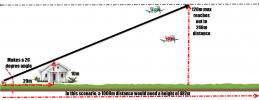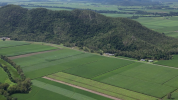- Joined
- Jun 21, 2020
- Messages
- 3,977
- Reactions
- 3,962
I am currently on vacation in beautiful rural Vermont. I was trying to capture early morning light and fly out towards one of the small mountains. As I live in a suburban area with lots of potential interference and inability to keep my eye on my drones very far I don’t push range at home, at all.
I am at a home, launching from an elevated deck with only a few sparse trees in front of me. I took my Mini 3 Pro up to 300 feet so I could have a clear vision of it as I flew.
As I made my first sortie, straight ahead, at 2500 feet the controller lost the drone’s signal. I brought it back and tried again in another direction. Only 3500 feet before completely losing signal. But at 2500 feet again the signal was spotty and fine control was lost.
One of the great things about the extended battery is that I never worry about running out of juice, not being able to bring my Mini 3 home. But that’s not an issue at all when the range is so very limited. I have to guess the mistake that DJI made with the Mini 3 Pro was to amputate the front legs which is where the antennae reside in their other drones. One thing is for sure; When I go to FL next month I’m taking my Mavic 2 Pro, possibly my Mini2. The Mini 3 Pro can stay at home. Bah. Humbug!
I am at a home, launching from an elevated deck with only a few sparse trees in front of me. I took my Mini 3 Pro up to 300 feet so I could have a clear vision of it as I flew.
As I made my first sortie, straight ahead, at 2500 feet the controller lost the drone’s signal. I brought it back and tried again in another direction. Only 3500 feet before completely losing signal. But at 2500 feet again the signal was spotty and fine control was lost.
One of the great things about the extended battery is that I never worry about running out of juice, not being able to bring my Mini 3 home. But that’s not an issue at all when the range is so very limited. I have to guess the mistake that DJI made with the Mini 3 Pro was to amputate the front legs which is where the antennae reside in their other drones. One thing is for sure; When I go to FL next month I’m taking my Mavic 2 Pro, possibly my Mini2. The Mini 3 Pro can stay at home. Bah. Humbug!













